
Drosophila is a genus of flies, belonging to the family Drosophilidae, whose members are often called "small fruit flies" or pomace flies, vinegar flies, or wine flies, a reference to the characteristic of many species to linger around overripe or rotting fruit. They should not be confused with the Tephritidae, a related family, which are also called fruit flies ; tephritids feed primarily on unripe or ripe fruit, with many species being regarded as destructive agricultural pests, especially the Mediterranean fruit fly.

Thomas Hunt Morgan was an American evolutionary biologist, geneticist, embryologist, and science author who won the Nobel Prize in Physiology or Medicine in 1933 for discoveries elucidating the role that the chromosome plays in heredity.
Selfish genetic elements are genetic segments that can enhance their own transmission at the expense of other genes in the genome, even if this has no positive or a net negative effect on organismal fitness. Genomes have traditionally been viewed as cohesive units, with genes acting together to improve the fitness of the organism. However, when genes have some control over their own transmission, the rules can change, and so just like all social groups, genomes are vulnerable to selfish behaviour by their parts.

A karyotype is a preparation of the complete set of metaphase chromosomes in the cells of a species or in an individual organism, sorted by length, centromere location and other features and for a test that detects this complement or counts the number of chromosomes. Karyotyping is the process by which a karyotype is prepared from photographs of chromosomes, in order to determine the chromosome complement of an individual, including the number of chromosomes and any abnormalities.
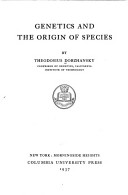
Genetics and the Origin of Species is a 1937 book by the Ukrainian-American evolutionary biologist Theodosius Dobzhansky. It is regarded as one of the most important works of the modern synthesis, and was one of the earliest. The book popularized the work of population genetics to other biologists, and influenced their appreciation for the genetic basis of evolution. In his book, Dobzhansky applied the theoretical work of Sewall Wright (1889–1988) to the study of natural populations, allowing him to address evolutionary problems in a novel way during his time. Dobzhansky implements theories of mutation, natural selection, and speciation throughout his book to explain habits of populations and the resulting effects on their genetic behavior. The book explains evolution in depth as a process over time that accounts for the diversity of all life on Earth. The study of evolution was present, but greatly neglected at the time. Dobzhansky illustrates that evolution regarding the origin and nature of species during this time in history was deemed mysterious, but had expanding potential for progress to be made in its field.
Alfred Henry Sturtevant was an American geneticist. Sturtevant constructed the first genetic map of a chromosome in 1911. Throughout his career he worked on the organism Drosophila melanogaster with Thomas Hunt Morgan. By watching the development of flies in which the earliest cell division produced two different genomes, he measured the embryonic distance between organs in a unit which is called the sturt in his honor. In 1967, Sturtevant received the National Medal of Science.
The mechanisms of reproductive isolation are a collection of evolutionary mechanisms, behaviors and physiological processes critical for speciation. They prevent members of different species from producing offspring, or ensure that any offspring are sterile. These barriers maintain the integrity of a species by reducing gene flow between related species.
The concept of a biological species as a group of organisms capable of interbreeding to produce viable offspring dates back to at least the 18th century, although it is often associated today with Ernst Mayr. Species of the fruit-fly Drosophila are one of the most commonly used organisms in evolutionary research, and have been used to test many theories related to the evolution of species. The genus Drosophila comprises numerous species that have varying degrees of premating and postmating isolation between them. These species are useful for testing hypotheses of the reproductive mechanisms underlying speciation.
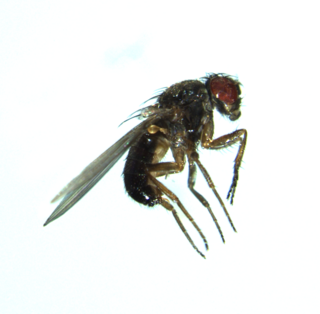
The Drosophila obscura species group belongs to the subgenus Sophophora and contains 6 subgroups: affinis, microlabis, obscura, pseudoobscura, subobscura, and sinobscura.

The immigrans-tripunctata radiation is a speciose lineage of Drosophila flies, including over 300 species. The immigrans-tripunctata radiation is a sister lineage to most other members of the subgenus Drosophila. A number of species have had their genomes or transcriptomes sequenced for evolutionary studies using Drosophila.
Sigmavirus is a genus of viruses in the family Rhabdoviridae, order Mononegavirales. Sigmaviruses naturally infect dipterans.

Drosophila subobscura is a species of fruit fly in the family Drosophilidae. Originally found around the Mediterranean, it has spread to most of Europe and the Near East. It has been introduced into the west coasts of Canada, the United States, and Chile. Its closest relative is Drosophila madeirensis, found in the Madeira Islands, followed by D. guanche, found in the Canary Islands. These three species form the D. subobscura species subgroup. When they mate, males and females perform an elaborate courtship dance, in which the female can either turn away to end the mating ritual, or stick out her proboscis in response to the male's, allowing copulation to proceed. D. subobscura has been regarded as a model organism for its use in evolutionary-biological studies.
The Drosophila saltans species group contains 21 described fly species, all of which are found in the neotropical region. It is one of the seven species groups in the subgenus Sophophora, the others being the D. willistoni, D. melanogaster, D. obscura, D. dispar, D. fima, and D. dentissima groups. The D. saltans species group is most closely related to the D. willistoni subgroup. The species are placed into five subgroups: the D. s. cordata, D. s. elliptica, D. s. parasaltans, D. s. saltans, and D. s. sturtevanti subgroups. It is thought that, like the D. willistoni species group, the D. saltans species group originated in tropical North America, colonized South America, and then diversified prior to the formation of the Isthmus of Panama. Some of these may have migrated back to North America within the last 4.5 million years ago (mya), and consequently the relationship between the species is unresolved due to the short amount of time that has elapsed since their divergence points.
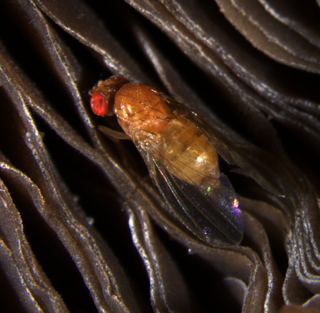
Drosophila neotestacea is a member of the testacea species group of Drosophila. Testacea species are specialist fruit flies that breed on the fruiting bodies of mushrooms. These flies will choose to breed on psychoactive mushrooms such as the Fly Agaric Amanita muscaria. Drosophila neotestacea can be found in temperate regions of North America, ranging from the north eastern United States to western Canada.

Drosophila testacea is a member of the testacea species group of Drosophila. Testacea species are specialist fruit flies that breed on the fruiting bodies of mushrooms. Drosophila testacea can be found in temperate regions of Europe, extending to east Asia. Drosophila testacea and Drosophila orientacea can produce viable hybrids, though they are separated by geography and behavioural barriers. Drosophila testacea females will also readily mate with Drosophila neotestacea males, but viable hybrids are never produced. This hybrid inviability ) may be due to selfish X chromosomes and co-evolved suppressors. Alternately, differences in sex pheromone reception could underlie female readiness and male willingness to copulate.
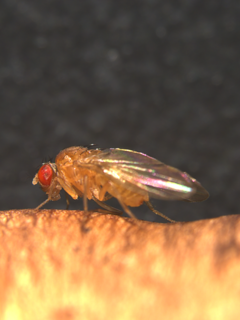
The Drosophila testacea species group belongs to the Immigrans-tripunctata radiation of the subgenus Drosophila, and contains 4 species: Drosophila putrida, Drosophila neotestacea, Drosophila testacea, and Drosophila orientacea. Testacea species are specialist mushroom-feeding flies, and can metabolize toxic compounds in Amanita mushrooms. The Testacea species group is studied for its specialist ecology, population genetics, and bacterial endosymbionts. The North American species Drosophila neotestacea is perhaps the best-studied of the group for its interactions with parasitic wasps and nematodes, bacterial endosymbionts, and trypanosomatid parasites. Of note, selfish X chromosomes have been discovered in three of the four Testacea group species.

Mushroom-feeding Drosophila are a subset of Drosophila flies that have highly specific mushroom-breeding ecologies. Often these flies can tolerate toxic compounds from Amanita mushrooms.
Drosophila albomicans is a species of vinegar fly in the family Drosophilidae. Drosophila albomicans is a member of the Immigrans-tripunctata radiation of the subgenus Drosophila. The D. albomicans genome was first sequenced in 2012 to study the evolution of novel sex chromosomes, a characteristic this species is best known for. One commonly accepted definition of the biological species concept is that individuals or populations are members of different species if they are incapable of successful interbreeding. While D. albomicans and Drosophila nasuta are commonly referred to as distinct species, there appears to be little to no sexual isolation between these two Drosophila species. Instead, behavioural differences appear to reproductively isolate these two species.

The Drosophila immigrans species group is a polyphyletic and speciose lineage of Drosophila flies, including over 100 species. Immigrans species belong to the Immigrans-tripunctata radiation of the subgenus Drosophila. Well-described species include Drosophila immigrans, and the sister species Drosophila albomicans and Drosophila nasuta. The genome of D. albomicans was sequenced in 2012 in an effort to characterize novel sex chromosome development in D. albomicans. Immigrans group species are related to mushroom-breeding Drosophila of the Quinaria and Testacea species groups.
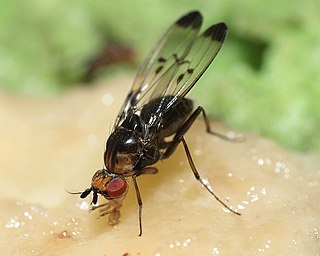
Drosophila silvestris is a large species of fly in the family Drosophilidae that are primarily black with yellow spots. As a rare species of fruit fly endemic to Hawaii, the fly often experiences reproductive isolation. Despite barriers in nature, D. silvestris is able to breed with D. heteroneura to create hybrid flies in the laboratory.













